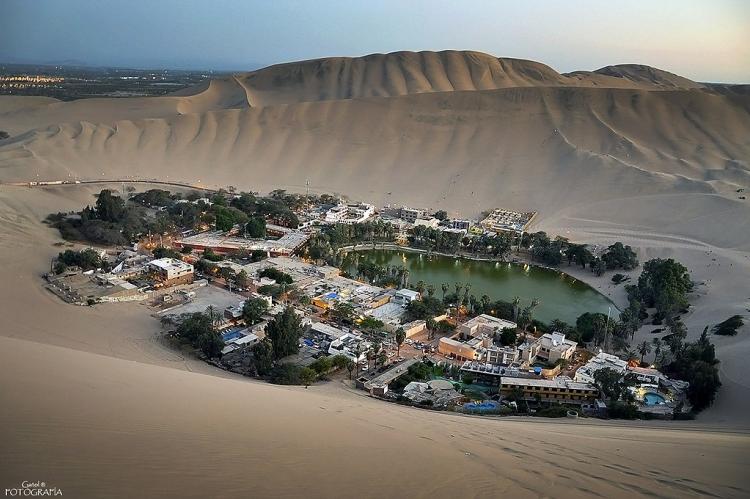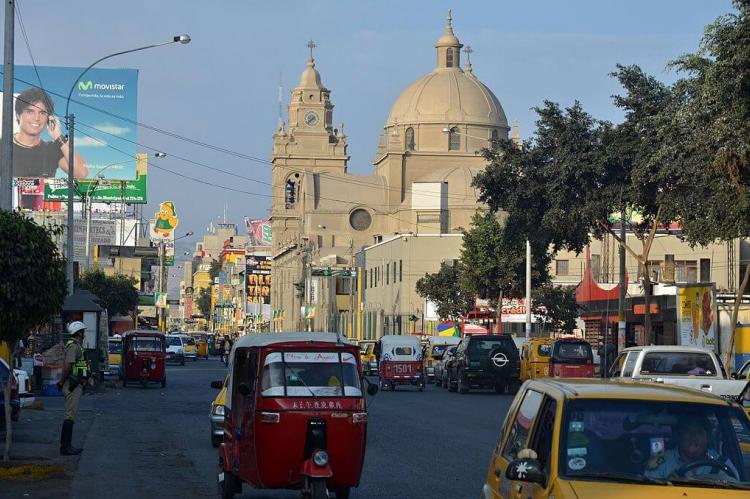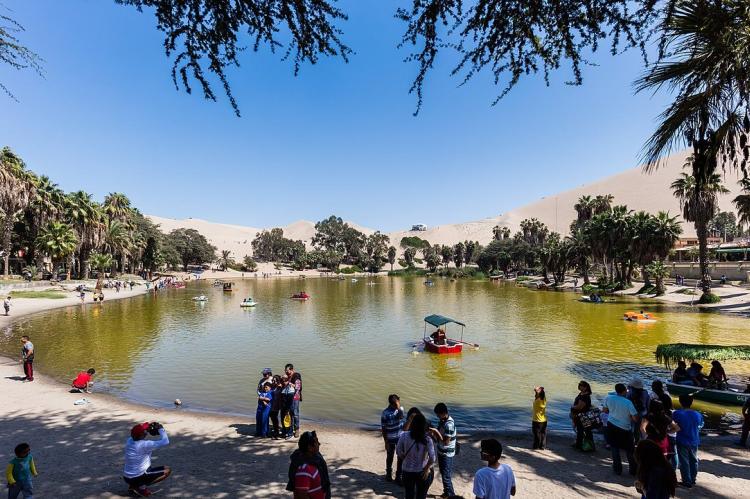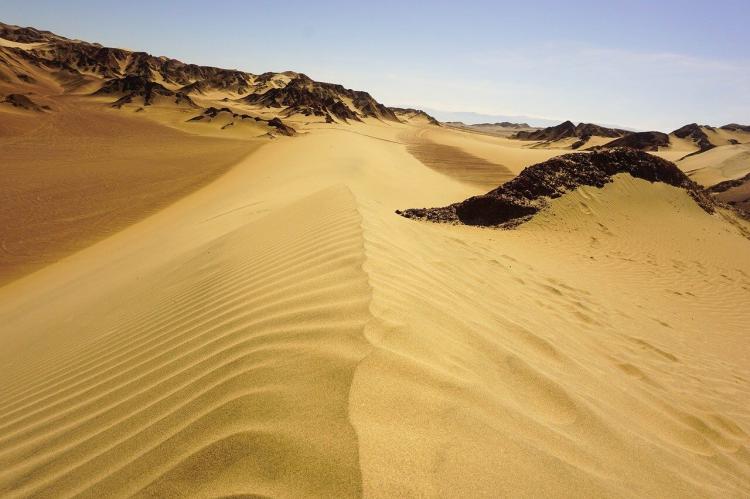Ica and Huacachina: Oases of Culture and Nature in Peru's Desert South
Nestled between the Ica Desert and southern Peru, Ica is rich in history, natural wonders, and traditions. Known for its ties to ancient civilizations, the Spanish colonial period, and Pisco, Ica is home to the stunning Huacachina Oasis, offering a blend of cultural heritage and desert beauty.
Exploring Ica and the Enchanting Oasis of Huacachina: A Journey Through Peru's Desert Gem
Nestled between the barren expanses of the Ica Desert and the vibrant culture of southern Peru lies the city of Ica, a place rich in history, natural wonders, and iconic traditions. Known for its ties to the ancient Inca civilizations and the Spanish colonial period and as the home of Peru's national drink, Pisco, Ica has much to offer visitors. Just beyond the city's boundaries lies one of Peru's most stunning natural features: the Huacachina Oasis, a shimmering jewel in the desert landscape that attracts travelers from across the globe. This blend of cultural heritage and desert beauty makes Ica and its surrounding region a must-visit destination in Peru.
The Historic City of Ica
Located approximately 300 km (186 miles) south of Lima, Ica is the capital of the Department of Ica in southern Peru. Though the region has been home to various Indigenous cultures for centuries, it was officially founded by the Spanish conquistador Jerónimo Luis de Cabrera in 1563. Originally settled as the town of Valverde, Ica was moved to its present location after an earthquake in 1569, and it was renamed San Jerónimo de Ica in 1640.
Today, Ica is a bustling city of over 280,000 people (as of the 2017 census). It is situated on the high plains that border the Andean foothills to the east, making it a unique blend of desert landscapes and mountain views. Despite being a modern urban hub, Ica's rich history is preserved in sites such as the Museo Regional de Ica, which houses artifacts that date back to prehistoric times and the Spanish colonial era.
The Ica Desert: A Coastal Enigma
The Ica Desert is a stark yet mesmerizing landscape stretching westward to the Pacific Ocean. This arid expanse is part of the Peruvian coastal desert and is often called the "Ica Desert." Despite its dry nature, the region is intensely irrigated, with the Ica River playing a crucial role in supporting agricultural production in the valley. The surrounding desert is known for cultivating cotton and grapes, the latter forming the foundation of Ica's famous contribution to Peruvian culture: Pisco.
Pisco: The Spirit of Ica
Ica is renowned as the home of Pisco, a grape brandy that has become synonymous with Peruvian identity. Pisco, produced from the grapes grown in the Ica region, is both a beverage and a source of cultural pride. The city and its surrounding vineyards have long been involved in producing this iconic drink, often enjoyed in the form of a Pisco Sour, the national cocktail of Peru. The region's history of viticulture dates back centuries, and even today, visitors to Ica can tour vineyards, learn about the Pisco-making process, and taste this famed spirit.
The Huacachina Oasis: A Desert Miracle
One of the most captivating attractions near Ica is the Huacachina Oasis, a small village built around a desert lagoon. Located about 5 km (3 miles) from the center of Ica and on the edge of the Atacama Desert, Huacachina is often described as a real-life mirage. Towering dunes surround this natural oasis and offer a striking contrast to the barren desert.
A Glimpse Into Huacachina's History
The history of Huacachina is closely tied to local legends, with stories claiming that the waters of the lagoon possess therapeutic properties. For centuries, the indigenous people of the region believed bathing in the oasis or applying its mud could cure ailments such as arthritis, asthma, and bronchitis. In the 1940s, wealthy Peruvians built holiday homes around the lagoon to exploit these healing powers. Although the oasis fell into disuse during the mid-20th century, it saw a resurgence in the 1990s when enterprising locals began promoting it as a tourist destination.
Today, Huacachina has around 100 permanent residents but attracts thousands of visitors annually. The village has a vintage feel, with many of its buildings dating back to earlier times, though they have since been converted into restaurants, cafes, and hostels to cater to the growing tourism industry. Visitors to the oasis can enjoy various activities, from relaxing by the lagoon to more adventurous options such as sandboarding and dune buggy rides.
Preserving the Huacachina Oasis
While the oasis is a natural wonder, human activity has threatened its existence in recent decades. Underground aquifers once fed the lagoon, but the increased drilling of wells in the surrounding region caused the water level to drop. In 2015, local businesses and conservationists began pumping water into the lagoon to ensure its survival as a tourist attraction. Today, the oasis is part of the Lake Huacachina Conservation Area, established to protect the fragile ecosystem surrounding the lagoon. The region is home to various plant species, such as palm and carob trees, birds, and other desert-dwelling creatures.
The Ica Region's Modern-Day Appeal
Ica and the Huacachina Oasis are vital contributors to Peru's tourism industry. The region's historical significance, natural beauty, and adventure activities make it a unique destination. Visitors can explore the city's cultural offerings, including the Museo Regional de Ica and the local vineyards while experiencing the thrill of Huacachina's vast dunes. This juxtaposition of rich history and dynamic modern tourism creates a unique appeal for those seeking relaxation and excitement.
Conclusion
Ica and its surrounding desert region offer a captivating glimpse into Peru's diverse landscapes and cultural heritage. From the city's colonial history to the tranquil yet awe-inspiring beauty of the Huacachina Oasis, the region provides an experience that blends history, nature, and adventure. As the home of Pisco and a gateway to the vast Ica Desert, this area remains one of Peru's most alluring destinations. Through careful conservation efforts and a vibrant tourism scene, Ica thrives, inviting travelers to discover its many treasures.





